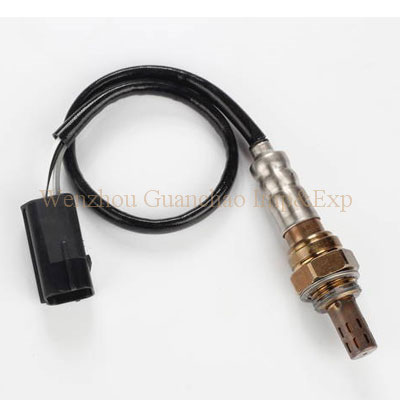Oxygen Sensor Manufacturer Answers: Are Air Fuel Sensors and Oxygen Sensors the Same? Is it possible to exchange?
Oxygen sensor manufacturers answer for you are air fuel sensor and oxygen sensor the same? Can it be exchanged? What's the replacement cost like? What are the scope of application?
Oxygen sensor installed on the exhaust pipe, mainly detects the amount of oxygen in the exhaust gas and then feeds back to the EUC for control. The oxygen sensor is not universal and cannot be replaced casually. Now the oxygen sensor does not have to be replaced with the original factory standard according to the model, so it is not enough to replace the oxygen sensor. The oxygen sensor manufacturer tells you that there are many kinds of oxygen sensors, so you must see the model when changing the oxygen sensor.

The air-fuel ratio sensor is a group sensor, which is generally installed in the main intake pipe. After connecting to the load ECU, the amount of fuel injection can be calculated, and the actual air-fuel ratio can be accurately detected.
An oxygen sensor or O2 sensor is an integral part of a vehicle's emission control system. Its main role in this system is exactly what its name implies - it senses or reads how much oxygen is present in the exhaust. It then converts these readings into signals that are sent to the vehicle's main computer. Based on these readings, the computer will be able to tell if it is too little, enough or too much oxygen in the exhaust system and from there be able to adjust the air and fuel mixture and the amount of fuel going into the engine. The reading from the O2 sensor also tells the computer what the engine is doing when it is on the road, such as engine temperature, engine load, etc.
Application of Oxygen Sensor
Oxygen sensor manufacturers tell you that oxygen sensors are widely used in petroleum, chemical, coal, metallurgy, papermaking, fire protection, municipal, pharmaceutical, automobile, gas emission monitoring, and other industries.
1. If the lack of oxygen in the measurement environment causes human safety, it is recommended to directly select 0-30% vol. Of course, in addition to the above-mentioned commonly used oxygen hypoxia reminder function for measuring human safety, there are many other uses that also need to detect oxygen.
2. Many trace oxygen content will be detected in high-concentration gases, such as trace oxygen in pure hydrogen and trace oxygen in pure nitrogen. These are all trace oxygen detectors with a range of 0-10000ppm, which is equivalent to a 1% vol. Volume ratio concentration range.
3. In the application places of detecting high-purity oxygen concentration, for example, some industrial control conditions require detection, the purity of oxygen, or the detection of oxygen concentration produced by oxygen generators. Such applications have relatively high oxygen content, and it is recommended to choose a 0-100%vol measurement range.
A new oxygen sensor can cost anywhere from less than $100 on some models to $300 or more on others, but this does not include labor, which the oxygen sensor manufacturer kindly notes can vary from vehicle to vehicle due to where the sensor is located. varies. Therefore, the total cost of replacing an oxygen sensor can vary greatly depending on the type of vehicle you drive.
 English
English Pусский
Pусский

